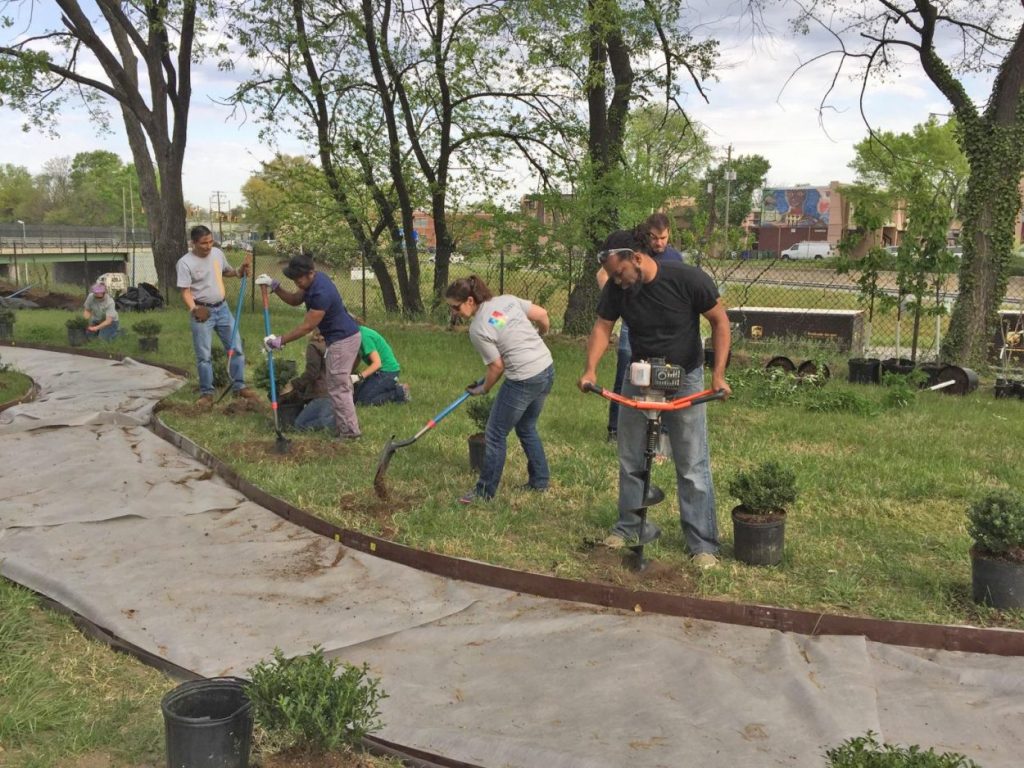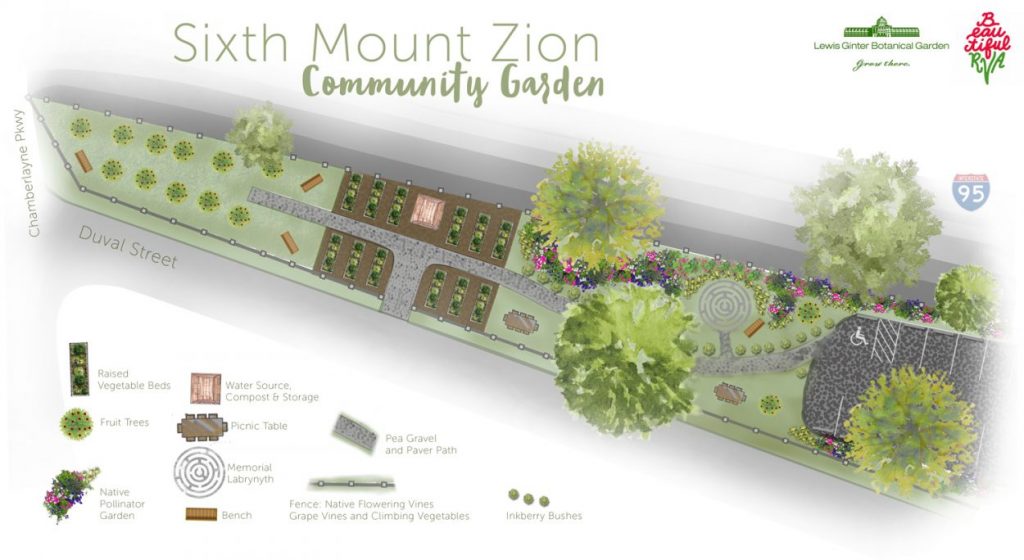Planting in Hard Places
The first class of Beautiful RVA‘s Ginter Urban Gardeners gathered twice a week, for 12 weeks, to do the very important work of making a difference: learning new things, building relationships, getting their hands dirty and urban gardening for the benefit of the Richmond community. Earlier this month, they became the first graduates of the program. Support for this program is provided by The Community Foundation. Earlier this year, participant Shelly Bowman shared some reflections on the work they were doing. Now, another participant, Rachel Loughlin, writes about her journey as a participant in the workshops.

Duron Chavis, right center, digs holes for plants with an auger at the Sixth Mount Zion garden. Then Altria volunteers and Ginter Urban Gardeners team up to get the plants in the ground.
Beautiful RVA & Urban Gardening
Duron Chavis, Community Engagement Coordinator for Lewis Ginter Botanical Garden, has no trouble communicating his life-long passion for urban gardening, but even he has to shout over the roar of Interstate 95 as he shares with about 25 volunteers from Altria the history of how that very highway was constructed where thousands of homes had been. The community’s fight to preserve the historic Sixth Mount Zion Baptist Church had also saved a small triangle of land where the Community Garden would soon, after just a bit more “sweat equity,” be located. It is a history that for too long has not been told at all, let alone shouted, but a small group of citizens is working to change that narrative.
For 12 weeks leading up to this morning the inaugural cohort of the Lewis Ginter Urban Gardeners had met to learn and sustainable urban horticulture, garden design community engagement and make plans for this first project. Earlier this month, ground was finally being broken and volunteer coordination skills deployed as nine fruit trees, 25 inkberry bushes and 20 grape vines were planted, and 12 raised beds and an accessible winding path were constructed. It was a beautiful morning as the combined efforts of Renew Richmond, Altria volunteers, and Lewis Ginter Urban Gardeners brought what had just been a dream and plan on paper into reality. This project, referenced in Michael Paul Williams’ Richmond Times Dispatch column earlier this spring, is in part a commemoration of the neighborhood that was torn apart by the construction of Interstate 95 in the early 60s. Bricks from the foundations of homes were uncovered during the garden’s installation.
Going forward there will be a need for additional volunteers to help with:
- The installation and ongoing care of the vegetables to feed the homeless and community members that participate in the Six Mount Zion Feeding programs
- The creation of a native pollinator garden
- Programming to engage the community in the space
Finally, we have planned a memorial labyrinth where community members and visitors can come to walk or rest on a bench and enjoy a touch of natural beauty in a corner of the city that has far too little and take a moment to reflect on the story these bricks and this ground have told. Usually, a reflection garden is located in quiet, peaceful spots and I am afraid ours will always be interrupted with the roar of the traffic going by, reminding us that the past in this place has not been a peaceful one. Sometimes we have to shout to tell the story, but sometime we speak loudest when simply sow some seeds and struggle together to dig out broken bricks that once had been homes, to make space for new trees. In the breaking of ground and in the texture of each scarred and crumbling brick, we will remember.
It is important to not be afraid to plant in hard places.
